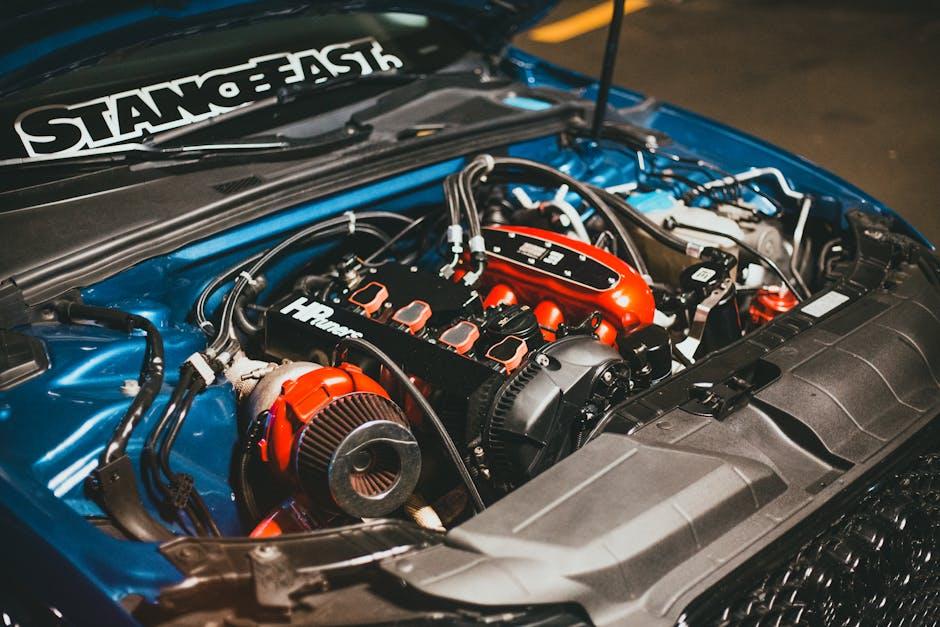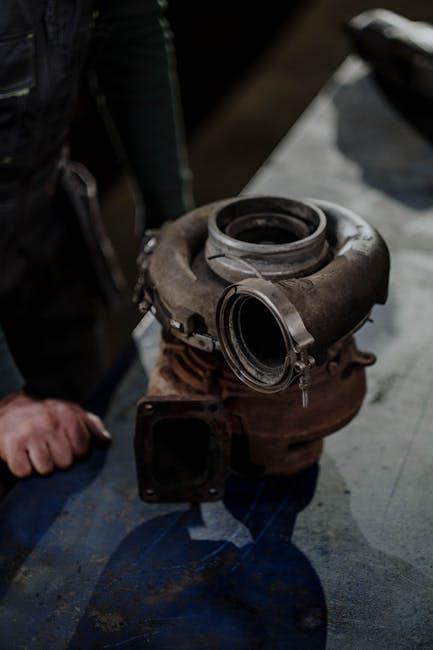Beneath the sleek exterior and powerful roar of your vehicle lies a complex network of vital components working tirelessly to keep you moving. Among these unsung heroes is the humble oil filter—an often-overlooked guardian that traps impurities and ensures your engine’s heart beats smoothly. Choosing the right oil filter is more than a routine purchase; it’s a decision that can influence your engine’s longevity, performance, and overall health. In this guide, we’ll navigate the essential considerations and expert tips to help you select the perfect oil filter tailored to your vehicle’s needs. Whether you’re a seasoned mechanic or a casual driver, understanding this small but mighty part can make all the difference under your hood.
Table of Contents
- Understanding the Role of Oil Filters in Engine Performance
- Key Features to Look for When Selecting an Oil Filter
- Comparing Different Types of Oil Filters and Their Benefits
- How to Match an Oil Filter to Your Vehicle’s Specifications
- Evaluating Brand Reputation and Customer Reviews for Reliability
- Tips for Installing and Maintaining Your Oil Filter for Optimal Results
- Q&A
- To Wrap It Up

Understanding the Role of Oil Filters in Engine Performance
At the heart of every well-functioning engine lies an often overlooked hero: the oil filter. Its primary responsibility is to trap contaminants, metal shavings, and dirt particles that can degrade engine oil quality. By effectively filtering these impurities, the oil filter ensures smooth circulation of clean oil, reducing wear and tear on engine components. This filtering process not only helps maintain optimal engine performance but also extends the lifespan of critical parts by preventing abrasive damage and corrosion.
Choosing the right oil filter means understanding your specific engine needs. Factors such as oil capacity, engine operating conditions, and manufacturer recommendations all play a crucial role. High-quality filters often feature advanced synthetic media for superior filtration efficiency and longer service intervals. When selecting your oil filter, consider these key attributes:
- Filtration efficiency rating
- Anti-drainback valve quality
- Filter media type (synthetic vs. cellulose)
- Compatibility with engine type and oil grade
- Brand reliability and warranty terms

Key Features to Look for When Selecting an Oil Filter
When narrowing down your options, build quality should be top of mind. Opt for filters constructed with durable metal end caps and reinforced synthetic media, as these elements provide superior strength and longevity under extreme engine conditions. Additionally, the seal quality cannot be overlooked—look for filters with nitrile rubber or silicone gaskets to ensure a tight, leak-proof fit that adapts seamlessly to engine vibrations and temperature shifts. These subtle details make a profound difference in protecting your engine from contaminants.
Equally important is the filter’s micron rating, which determines the size of particles it can trap. A lower micron rating means finer filtration, but it needs to balance with good oil flow to prevent engine strain. Also, check if the oil filter includes features like anti-drain back valves to prevent dry starts and bypass valves to maintain oil circulation in clogged conditions. Here’s a quick overview of key specs to compare:
| Feature | What to Look For | Why It Matters |
|---|---|---|
| Filter Media | Synthetic or high-quality cellulose | Better dirt capture & durability |
| Micron Rating | 10-20 microns ideal | Efficient particle filtration |
| Valve Types | Anti-drain back & bypass valves | Prevents dry starts & keeps oil flow |

Comparing Different Types of Oil Filters and Their Benefits
Choosing the ideal oil filter involves understanding the distinct advantages each type offers. Conventional filters are widely available and budget-friendly, providing reliable performance for everyday driving. For those seeking enhanced filtration, synthetic filters offer superior particle-trapping capacity and longevity, which is especially beneficial during extended oil change intervals. Alternatively, high-performance filters cater to enthusiasts and heavy-duty users by maximizing oil flow and filtration under extreme conditions. Each type balances cost, durability, and efficiency, making it crucial to match the filter’s capabilities with your vehicle’s demands.
- Conventional Filters: Affordable, sufficient for routine use
- Synthetic Filters: High efficiency, longer service life
- High-Performance Filters: Designed for tough environments, optimal oil flow
| Filter Type | Filtration Efficiency | Cost Range | Ideal Use |
|---|---|---|---|
| Conventional | Moderate | $5 – $15 | Daily driving |
| Synthetic | High | $15 – $30 | Extended oil changes |
| High-Performance | Superior | $20 – $40 | Heavy load & track use |
When choosing, consider not only the filter’s technical specs but also your driving style and environmental factors. A synthetic filter better suits harsh climates and long-distance driving, while a conventional option works well for light, urban commutes. For those pushing their vehicles to the limits, the investment in a high-performance filter ensures that the engine remains protected without compromising power. Ultimately, the right filter maintains engine health by efficiently capturing contaminants and ensuring smooth oil circulation.

How to Match an Oil Filter to Your Vehicle’s Specifications
To ensure your engine runs smoothly and efficiently, selecting an oil filter that perfectly aligns with your vehicle’s specifications is crucial. Start by checking your owner’s manual or visiting your vehicle manufacturer’s website to locate the exact oil filter part number recommended. Remember, oil filters differ not only in size but also in design, filtration capability, and pressure tolerance—features tailored to specific engine needs. Using the wrong filter can lead to poor filtration, reduced oil flow, or even engine damage.
When matching an oil filter, consider these important factors:
- Compatibility: Verify the filter fits your engine’s mounting type and dimensions.
- Filtration Efficiency: Look for micron ratings appropriate to your engine’s demands.
- Oil Flow Rate: Ensure the filter supports adequate flow to maintain optimal lubrication.
- Material Quality: High-grade filter media ensures durability and better contaminant capture.
| Key Specification | Importance | What to Check |
|---|---|---|
| Thread Size | High | Matches engine mounting |
| Micron Rating | Medium | Particle filtration level |
| Bypass Valve Pressure | High | Maintains oil flow under pressure |

Evaluating Brand Reputation and Customer Reviews for Reliability
Choosing an oil filter is more than just selecting the first one that fits your engine; it’s about aligning with brands that carry trust and proven performance. When sifting through options, prioritize manufacturers that have consistently demonstrated commitment to quality and innovation. This can often be gauged by looking into industry certifications, the frequency of positive third-party testing results, and the longevity of the brand’s presence in the automotive market. Brands with a track record of using high-grade materials and cutting-edge filtration technology tend to stand out as reliable choices.
Customer reviews provide invaluable insights that go beyond marketing claims. Look for detailed testimonials that highlight long-term engine protection, ease of installation, and filter durability. Keep an eye out for recurring themes in the feedback—both positive and negative—to gauge overall satisfaction. Here’s a quick checklist for evaluating reviews effectively:
- Authenticity: Check for verified purchase badges.
- Balance: Avoid products with overwhelmingly positive reviews that seem generic.
- Specificity: Prefer reviews that mention exact vehicle models and driving conditions.
- Response: Note if the brand actively responds to concerns or issues raised.
| Factor | What to Look For | Why It Matters |
|---|---|---|
| Certification | API, ILSAC, or OEM approvals | Ensures compatibility and standards compliance |
| Review Variety | Mix of short and detailed comments | Reflects genuine user experiences |
| Brand Longevity | Established presence over 10+ years | Indicates stability and customer trust |
| Customer Support | Responsive and helpful service | Provides confidence and issue resolution |

Tips for Installing and Maintaining Your Oil Filter for Optimal Results
Ensuring your oil filter is installed correctly is essential for safeguarding your engine’s health. Begin by thoroughly wiping the filter mounting surface to remove debris or old gasket material. When fitting the new filter, lightly coat the rubber gasket with fresh engine oil; this simple step creates a better seal and makes future removal easier. Avoid overtightening the filter—turn it snugly by hand, then give it an additional ¾ to 1 full turn. Over-tightening can damage the filter or the seal, leading to leaks and potential engine problems.
Maintenance is just as critical as proper installation. Regularly inspect your oil filter during oil changes to detect any signs of wear, damage, or seepage. Keep these important tips in mind:
- Follow manufacturer’s replacement intervals to prevent clogging and maintain optimal filtration.
- Use high-quality oil filters that match your vehicle’s specifications to ensure effective contaminant removal.
- Dispose of old filters responsibly as they contain residual oil and harmful substances.
| Common Installation Issue | Impact | Quick Fix |
|---|---|---|
| Dirty mounting surface | Oil leaks | Clean thoroughly before installation |
| Over-tightening | Damaged gasket | Hand-tighten + ¾ turn only |
| No oil on gasket | Poor seal quality | Coat gasket with engine oil first |
Q&A
Q&A: How to Choose the Right Oil Filter
Q1: Why is choosing the right oil filter important?
A1: The oil filter plays a crucial role in keeping your engine clean by trapping dirt, metal particles, and other contaminants. Selecting the proper filter ensures optimal engine performance, prolongs engine life, and maintains the quality of your oil.
Q2: What are the main types of oil filters available?
A2: There are primarily three types: mechanical (spin-on), cartridge, and magnetic oil filters. Spin-on filters are the most common and convenient, cartridge filters require housing replacement, and magnetic filters help attract metal shavings but are often used as supplementary filters.
Q3: How do I know which oil filter fits my vehicle?
A3: The easiest way is to consult your vehicle’s owner’s manual or manufacturer’s specifications. Additionally, automotive stores and online retailers usually have lookup tools where you input your car’s make, model, and year to find compatible filters.
Q4: Are more expensive oil filters always better?
A4: Not necessarily. While premium filters often feature better materials and higher efficiency ratings, the best choice depends on your vehicle’s requirements and driving conditions. Balance cost with quality and compatibility for the best results.
Q5: What specifications should I pay attention to when choosing an oil filter?
A5: Key specs include micron rating (how small a particle it can trap), filter media type (cellulose, synthetic, or blend), construction quality, and anti-drainback valve presence. These factors affect filtration efficiency and oil flow.
Q6: Can I switch brands or types of oil filters without issue?
A6: Generally yes, as long as the new filter meets your engine’s specifications. However, sudden changes to very different filters aren’t recommended without consulting a mechanic, as they might affect oil pressure or flow.
Q7: How often should I replace my oil filter?
A7: It’s usually recommended to replace your oil filter every oil change, typically every 3,000 to 7,500 miles depending on vehicle and oil type. Regular replacement prevents clogging and maintains engine health.
Q8: Are reusable or washable oil filters a good choice?
A8: Reusable filters can reduce waste and save money over time, but they require proper maintenance and cleaning. They’re less common and not always suitable for all vehicles, so check your manual or ask a professional before choosing this option.
Q9: What happens if I use the wrong oil filter?
A9: Using an incorrect filter can cause oil leaks, improper filtration, reduced oil pressure, or even engine damage. It’s essential to use the filter type and size that your engine design specifies.
Q10: Any tips for installing a new oil filter correctly?
A10: Before installation, lubricate the rubber gasket with fresh oil to ensure a good seal. Tighten the filter by hand according to manufacturer instructions—usually about 3/4 turn after the gasket contacts the mounting surface—to avoid over-tightening.
Choosing the right oil filter is more than just matching a size; it’s about protecting your engine with the best fit and filtration for your ride’s unique needs. With the right knowledge, you can keep your engine running smoothly mile after mile.
To Wrap It Up
Choosing the right oil filter might seem like a small detail, but it’s one of those quiet decisions that keeps your engine humming smoothly and your journeys worry-free. By understanding the types, materials, and specifications that best suit your vehicle, you’re not just picking a part—you’re investing in reliability and performance. So next time you reach under the hood, remember: the right oil filter is more than a filter—it’s the unsung hero of your engine’s health. Drive smart, filter smart.

